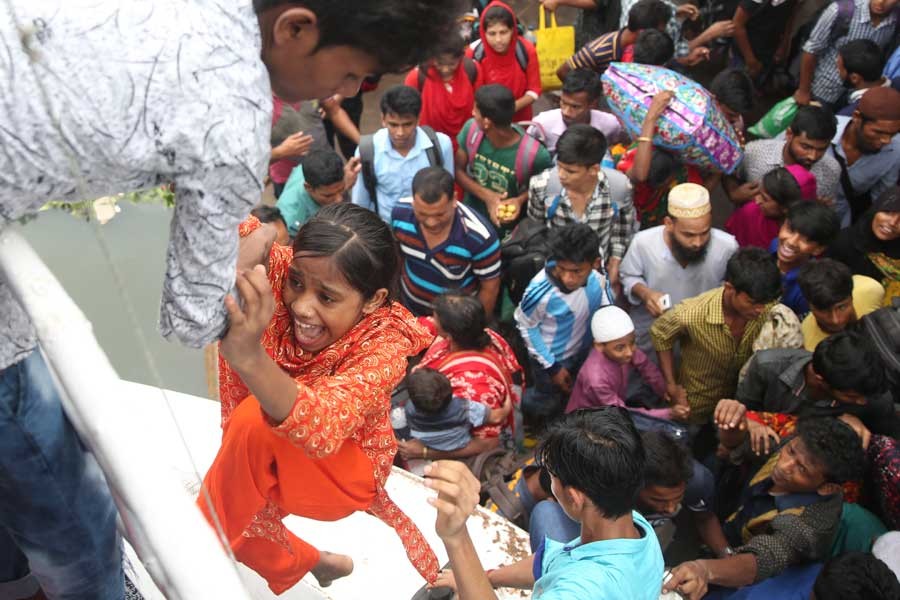Not too long ago, even in the seventies and the eighties, people going to villages during Eid were fewer in number than that seen later. Two reasons could be cited for it. First, as Dhaka had yet to emerge as a stiflingly populated city, its citizens didn't feel like leaving Dhaka to celebrate Eid in the villages. Second, the Dhaka dwellers' emotional attachment to the national capital had yet to start declining. Those who would celebrate Eid here did that with their genuine love for the city. The urban alienation, innate or made-up, hadn't overcome the city's residents. Most of these people staying back migrated to Dhaka in the 1950s. Many came to the then provincial capital to complete their higher studies. Others arrived in the city to pick large-city based job career and eventually settle here. Dhaka became their permanent addresses, links with their ancestral villages weakening fast.
Dhaka is destined to become a megacity, as the capital of Bangladesh. It took nearly three decades for its residents' Eid-time mass exodus from the city. The now-globally recognised reasons for Dhaka's infamy for being unlivable have lately played a great role in the general people's growing disillusionment with the capital. Even the long-time residents nowadays have started considering the Eid rushes home as opportunities for short breaks from the urban scourges. The short-term relief from the fast growing ennui and monotony besetting the Dhaka life justifies the many ordeals the village-bound travellers keep undergoing willingly. In fact, social analysts observe a longing for escaping the unlivable Dhaka as a vital reason why people embark on the hardship-filled journeys home. The irony is few people are capable of realising the emerging unheard-of urban maladies. They hardly understand that it is their falling victim to the city's squalid abyss which continues to prompt them to turn hostile to life in Dhaka.
The village-bound people's desperate efforts to embark on their journeys home explain the episode amply.
A dominant trend featuring life in Dhaka is its quintessentially contradictory character. Despite its unabated growth, it is generally viewed as an unwieldy city. On the other hand, it has yet to fully come free of its rusticity. According to the noted city planners, it is the chaotic infrastructural growth coupled with glitches blighting its urban communication and utility services which have long been contributing to its unlivable status.
The sensitive segments find in the Eids two convenient escape routes to seek shelter in faraway places. Their urge to reunite annually with their kith and kin goes far beyond the social rites. In reality, they look for escape routes which will ensure them a few days free of the urban malaise. The average Eid vacationers comprise people who have yet to be fully acclimatised with the urban way of life. Most of them arrived in Dhaka after the country's independence in 1971.
The migration to the newly independent country's capital in search of livelihood, complete higher education etc had continued since then. These internal migrants, however, couldn't accept Dhaka as a place of their own. This applies to even people who have found opening to businesses, and earned huge volumes of profit. Lots of them bought landed plots on the city outskirts, and built multistorey apartments. Despite becoming permanent settlers in the capital, these segments have failed to absorb themselves with the city. Their soul lay with villages. These people and those employed in low-level office jobs, doing petty businesses or menial work etc are found constituting the largest segment of the village-bound people during Eid holidays.
Compared to them, it is the people residing in Dhaka since the 1950s, who show little interest in leaving the capital. They love to stay put in cities during Eid holidays. This is a global trend.


